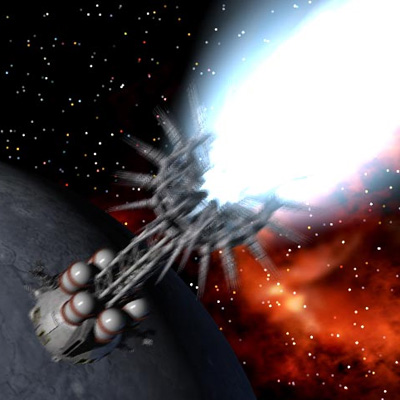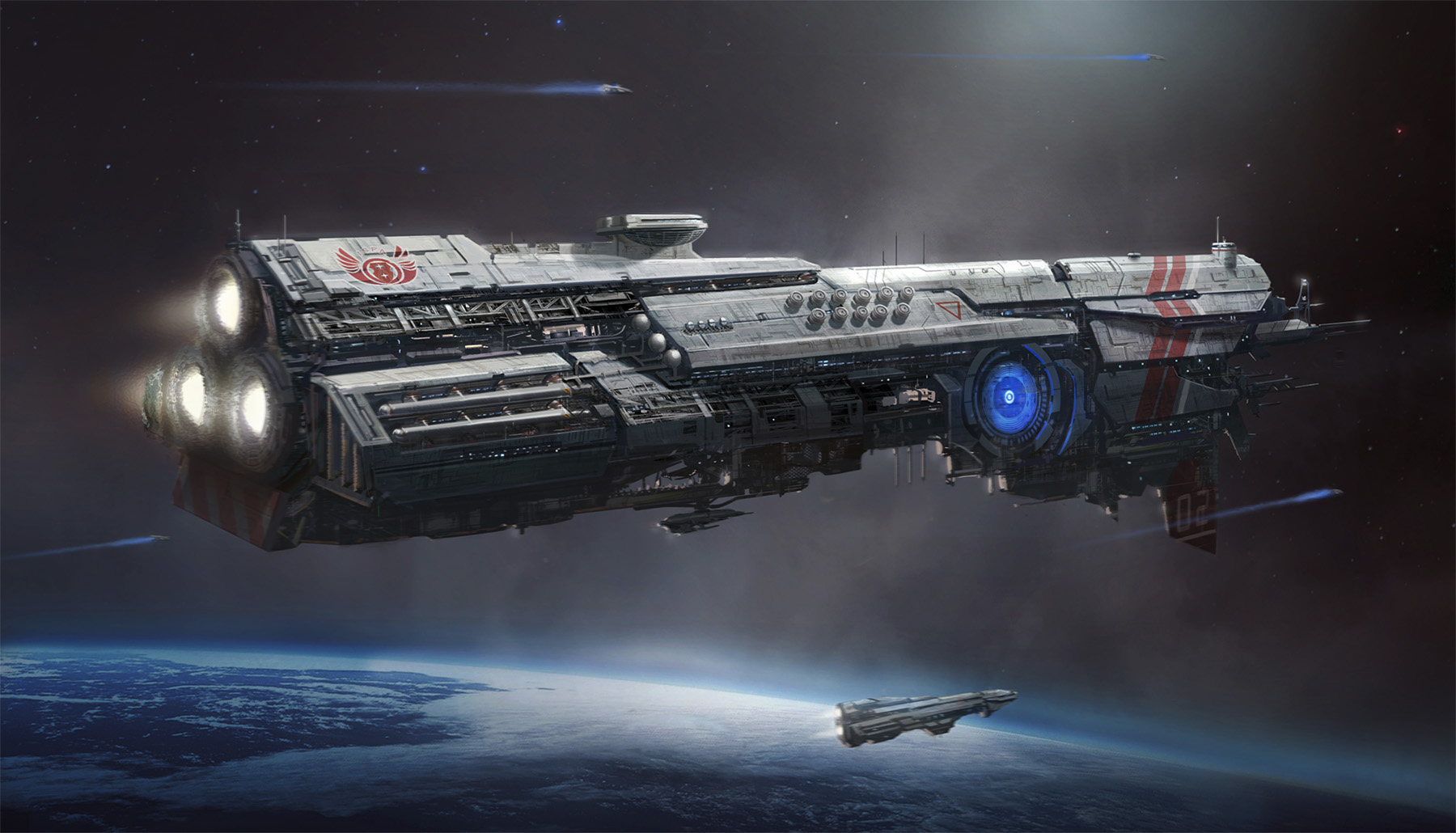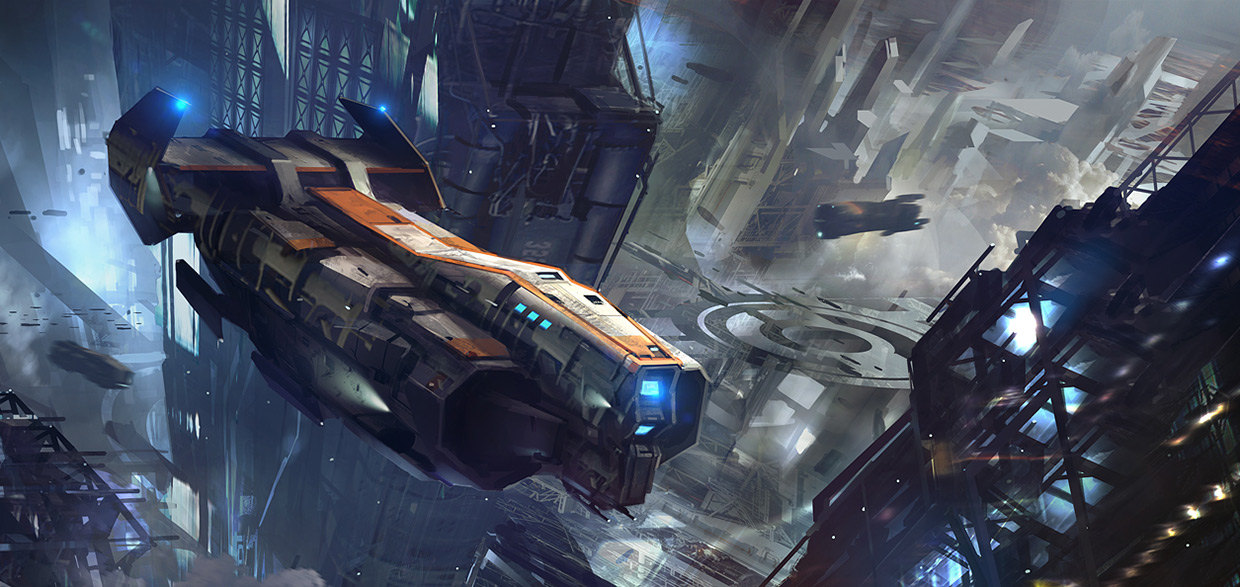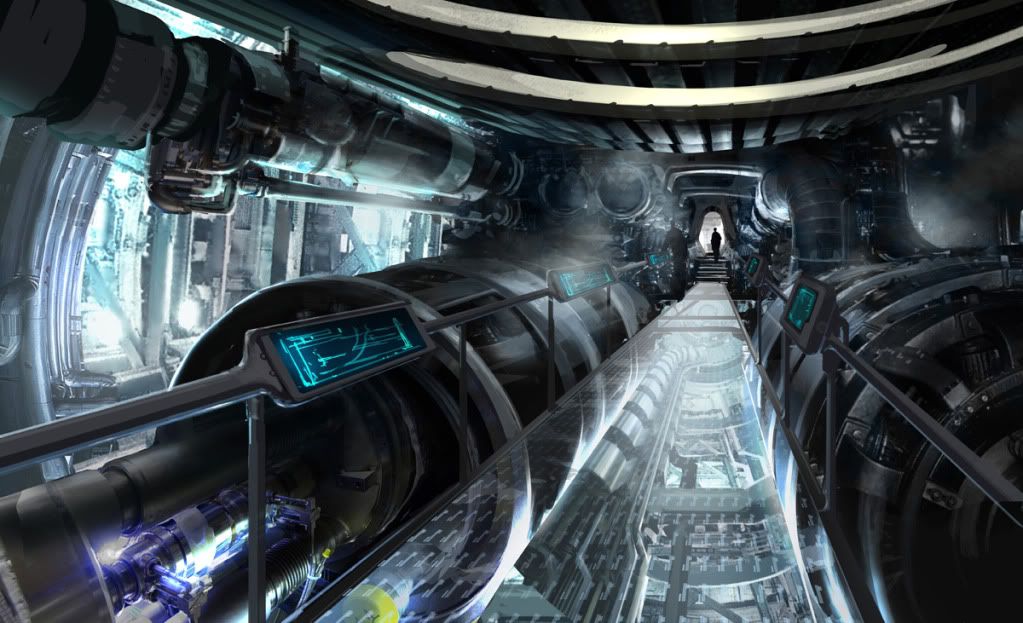Fusion Drive
After the development of stable Fusion Reactors in 2061, development of fusion propulsion for spacecraft was developed alongside Earthbound fusion power plants. On 11 May, 2063, the first fusion power plant reaction was ignited in Reykjavik, Iceland. Two years later, the first space vessel built around a fusion drive was launched from the international orbital shipyard Solomon.
The first fusion-driven ship was the UNS Icarus, which launched on July 9th, 2165 - bound for Proxima Centauri B. The Icarus made its ten-year journey without incident utilizing chemically induced hibernation (See Also: Sleeper Ships) and a crew-rotation method for vital ship operations. A complement of 200 scientists, military personnel, and colony volunteers were also on board; but were not awoken until two weeks before arrival at their destination. While the small colony founded on Proxima Centauri B - later dubbed Proximus - would remain an important scientific and trade outpost, the planet would not prove favorable for major colonization efforts.
How It Works
Although developed alongside Earthbound fusion reactor technology, the fusion drive reactor has as many differences as it does similarities to it's larger cousin. While the Reykjavik reactor - and other that followed - have a doughnut-shaped reaction chamber; the space-bound fusion reactor is a cylindrical chamber. The initial energy and fuel input is all located at the fore of the reactor, with high-frequency laser emitters being used to introduce energy to the reaction.
The magnetic containment field is polarized in a way that encourages the plasma resulting from the reaction towards the rear of the reactor, which connects to a primary thrust nozzle. This nozzle is likewise equipped with a polarized magnetic field that further accelerates the release of the plasma, creating an enormous amount of thrust. In addition, the electricity generated by the reaction can be used to power supplemental ion drives; greatly boosting the thrust potential of the vessel. The helium by-product of the reaction is also typically stored for use in maneuvering thrusters.
An early fusion-powered research vessel, circa 2175.
Early fusion reactors were very large; creating a mass-to-thrust ratio that - while very advanced compared to chemical propellants - was less than ideal. Over the next three hundred years, advances in containment technology has greatly reduced the size and efficiency of the fusion reactor. While most early ships only had one reactor - and it often accounted for 75% of the mass of a vessel - modern ships often have multiple fusion reactors. Depending upon the size of the ship, requirements for thrust, and available resources for production; the size and layout of the fusion drives in a ship might vary.
Practical Limitations and Procedures
As the fusion reaction inside the drive core is essentially a contained nuclear explosion, great care must be taken to maintain the magnetic containment fields. The reaction also generates an enormous amount of heat, and cooling systems must also be operating at peak efficiency to keep the reactor from turning the inside of a ship into a giant oven. The excess heat would also damage the electronic systems regulating the magnetic containment. Should either system fail, the results would be disastrous. There have been many examples of this over the centuries, some accidental and some as a result of damage during combat. Should the containment of a fusion reactor on board a ship fail suddenly due to catastrophic damage, the entire vessel would erupt in a nuclear fireball the likes of which have never been seen on Earth.
Ion Drive
Many ships with fusion drives have supplemental ion drives that use electricity generated from the fusion reactor as an energy source. These ion engines supplement the thrust of the ship at little additional cost of mass. Some smaller ships - especially modern tenders and shuttles that are not intended for interstellar flight - often have a small fusion reactor solely as a power source and derive all of their thrust from ion drives. While the ion drive does not operate within an atmosphere, it can be a useful propulsion method during space-born portions of space-to-surface operations. Tghis saves fuel for conventional plasma or chemical thrusters to be used during atmospheric operations.
In an ion drive, an inert gas is introduced to a reaction chamber. Electricity is introduced to the gas, knocking electrons from the atoms and rendering an ionized version of the gas. The process of exciting the subatomic particles also heats the reaction chamber, resulting in the ionized gas becoming a super-heated plasma. The resulting reaction builds pressure that is ejected through a thrust nozzle utilizing a polarized magnetic field, generating a high ration of thrust with a relatively low amounts of fuel and energy requirements.
Power Generation
In addition to generating the primary thrust of a ship, the fusion reactors on board a spacecraft also generate all of the power required to operate the ship's systems. Electricity for computers, life support, lighting, and other applications all come from the fusion reactors. As mentioned before, some of this power might even be diverted to ion drives for additional acceleration thrust or maneuvering thrusters.
An engine room with two fusion drives.
One of the major advantages of the constant, sustainable reaction in a fusion reactor is providing a steady supply of energy for recharging the capacitors for the ship's Singularity Drives. These systems require an enormous amount of power, and even a ship equipped with multiple fusion reactors must spend time recharging the capacitors to store enough energy to initiate a Faster Than Light Travel jump.
Remove these ads. Join the Worldbuilders Guild













Comments